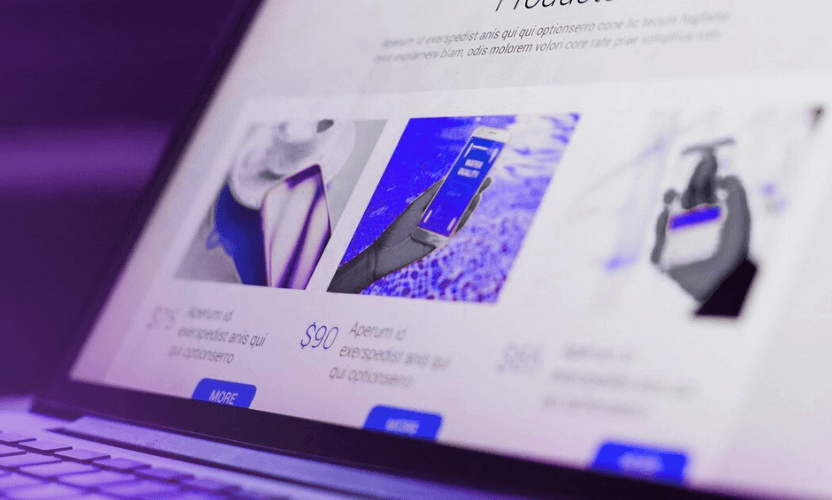eBay has become renowned for being the go-to place for bargain hunters, however, this, unfortunately, means that it is also the ideal place for criminals to sell their dodgy, IP Infringing products. Unlike many of the other platforms, eBay does not have its own dedicated platform to remove fakes, instead they have what is known as their Verified Rights Owner Programme (VeRO).
eBay Verified Rights Owner (VeRO) Programme
Launched in 1998, eBay’s VeRO programme enables Intellectual Property Rights holders to report products and listings that they believe infringe their IP. The programme is open to all IP right owners and reports can be made only by the rights holder themselves, or an authorised representative. To join the programme, rights owners must complete and submit a Notice of Claimed Infringement (NOCI) form.
What can I report?
- Counterfeits or copycat products
- Items that clearly infringe your registered IP such as trademarks or patents
- Unauthorised use of your copyright in either the listing or the product page
You can’t report a product if your purpose is to control the price point of an item, for selective distribution, for contractual issues or if your issue is regarding regulatory compliance issues.
How do I find out if fakes are being sold online?
Brand monitoring tools are essential for businesses to protect their online reputation and ensure that counterfeit products are not being sold online as well as providing valuable insights into your audience. Here are some strategies to help you find out if fakes are being sold online:
- Set up Google Alerts: By setting up Google Alerts for your brand name, product names, and key trademarks, you can receive notifications whenever new content related to your brand is published online. This can help you quickly identify any unauthorised listings or counterfeit products being sold on eBay or other platforms.
- Monitor social media platforms: Keep an eye on social media channels such as Facebook, Instagram, and Twitter for mentions of your brand or products. Look out for social media posts promoting counterfeit goods or unauthorised listings. Follow our top tips for social media monitoring.
- Use online brand protection tools: There are several online brand monitoring tools available that can help you monitor your brand online. These tools can help you track social mentions, online marketplaces, review sites, identify counterfeit products, and take action against sellers who are infringing on your intellectual property rights. Find out more about SnapDragon’s advanced online brand protection software.
- Conduct regular searches on E-commerce platform such as eBay: Take the time to search for your brand or key product names on eBay regularly. This will help you identify any unauthorised listings or counterfeit products that are being sold on the platform.
Taking action against sellers who are infringing on your intellectual property rights is crucial for protecting your brand and reputation. Once you have identified unauthorised listings or counterfeit products being sold on eBay, you can report them.
So, how do I remove a fake from eBay?
Once you have sent your initial NOCI you are technically ‘registered’ on the system. From here on you can send your take down requests to the specific email for the territory within which you want to enforce. For example, in the UK you would send your takedown email to vero@ebay.co.uk For the US you would send it to vero@ebay.com For Germany you would send it to vero@ebay.de and so on.
In your email, you need to include the following things:
- Firstly, a description of the infringement that you think has taken place. For example “The seller/s reported here are selling items which are protected in the EU by registered design number: XXXXXX.” You should include as much detail about the specific IP here as you can, we also suggest adding a link to where the official product can be found if possible.
- Secondly, outline your claim. Make sure you state:
- Intellectual Property Owner – usually the brand that is being infringed
- Your Name and Title
- Your Company
- Your Address
- An email address that eBay will contact you on
- An email address that you are happy to give to the infringing seller
- Your phone number
- Your website
- Next, you need to tell them the reason code that you think the item infringes. The various codes can be found on your original NOCI form.
- The Intellectual Property Registration number and the territory within which it is registered, such as EU.
- The item number(s) of the infringing product(s). This can be found after the item description in the URL and contains 12 numbers. If the same IP is being infringed in the same territory you can submit as many item numbers here as you want.
- A declaration that you believe that the information provided is correct – you can use the one from your original NOCI.
- Your signature and the date of submission.
- Finally, ensure that you provide, as an attachments:
- The Infringed IP
- A certificate of incorporation
This sounds like a lot, I know, but once you’ve done one it gets easier. We recommend saving your initial submission in your emails and using it as a template if you need to make another takedown request.
However, if this does feel overwhelming to you, don’t worry – we can help. Our team of experienced and friendly brand protection experts are on hand to seamlessly defend and protect your brand online. Simply get in touch or request a demo today.
FAQs
- Brand reputation: This includes monitoring what customers are saying about your brand online, through reviews, social media mentions, and other channels. It’s important to address any negative feedback promptly and engage with customers to build a positive reputation.
- Brand consistency: Make sure that your brand message, visual identity, and values are consistent across all platforms and touchpoints. Monitor how your brand is being represented by partners, affiliates, and influencers to ensure alignment with your brand guidelines.
- Brand presence: Keep track of where and how your brand is being mentioned online, including on social media, review sites, forums, and news outlets. This will help you identify any unauthorised or harmful use of your brand and take appropriate action.
- Brand performance: Monitor key metrics such as brand awareness, brand loyalty, customer satisfaction, and market share to gauge the overall health of your brand. Use this information to make informed decisions about marketing strategies and brand positioning.
- Brand protection: Monitor for any potential trademark infringement, counterfeit products, or unauthorised use of your brand assets. Take immediate action to protect your brand and intellectual property rights from being compromised.
By closely monitoring these brand elements, you can proactively manage your brand’s reputation, ensure consistency in messaging, and protect your brand from potential threats.
Brand monitoring tools are essential for businesses to keep track of their online reputation and customer feedback. Some popular brand monitoring tools include:
- Social Mention: This tool allows users to monitor mentions of their brand across various social media platforms in real-time. It provides insights into sentiment, reach, and engagement levels.
- Google Alerts: Google Alerts is a free tool that allows users to monitor mentions of their brand, competitors, or any other keyword across the web. Users can set up alerts for specific keywords and receive email notifications whenever those keywords are mentioned online.
- Hootsuite: Hootsuite is a social media management tool that includes social media monitoring tools to track mentions of your brand on social media platforms. It also provides analytics and reporting features to help businesses understand their brand’s online presence.




